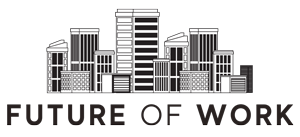There is a sense that employment law is struggling to keep up with the technological advancements of the modern age, whether it be the potential risks to society exposed by the “AI revolution”, or equally for other fast-developing technologies such as the metaverse.
The term “metaverse” has been in use for over 30 years. However, it is only in recent years that technology giants such as Meta and Microsoft have invested heavily and awareness of the metaverse as something more than science fiction has become more prevalent in society at large. The metaverse is an immersive, digital world where users can interact with a computer-generated environment and other users.
It is accessible through devices like VR headsets, AR glasses, smartphones, and computers. Users interact with each other and digital objects in real-time, within environments that span both digital and physical spaces. Users can navigate this space through avatars, which are digital representations of themselves, and can participate in a variety of activities that mirror real-world interactions encompassing everyday life including work and entertainment.
Re-imagining the workplace
In 2021, Bill Gates predicted that “Within the next two or three years…most virtual meetings will move from 2D camera image grids…to the metaverse, a 3D space with digital avatars.”
AI has of late overshadowed buzz about the metaverse, but given the shifts in ways of working since the global pandemic, and, more recently, younger businesses being more likely to embrace remote working (a trend likely to grow more quickly in the future), the shift from traditional internet usage towards internet usage in virtual environments is likely to accelerate. This is particularly so for businesses in sectors such as information and communications, professional and scientific activities, and finance and insurance, where employees invariably undertake computer-intensive tasks that can be easily conducted remotely.
Whilst the likes of Zoom and Teams remain the go-to facilitator for remote work, training and development of employees in 2024, there is evidence that the market is readjusting and re-focusing on viable use cases to pressure test the contributions and real value the metaverse can bring. A recent survey found that 58% of companies with future metaverse plans have already deployed or piloted at least one metaverse use case in their organisation.
Possible pitfalls
Notwithstanding the perceived benefits the metaverse can offer, employers should be mindful of the possible pitfalls of incorporating it into the workplace. Recent headlines about a police investigation into an alleged sexual assault of a girl playing a game in the metaverse shine a light on the need to seriously weigh the benefits against possible risks of embracing new technology and to only do so with appropriate guardrails and safeguards in place in an employment context.
There is a wide range of employment issues organisations may face with the implementation of the metaverse into the workplace, including:
1. Virtual Harassment and Cyberbullying: Reports of instances of avatars being sexually harassed or assaulted in virtual environments are likely to raise serious concerns about new forms of workplace harassment and cyberbullying.
2. Avatar Rights and Identity: Complex and (currently) untested legal questions about the rights of avatars have emerged, such as whether an avatar can possess characteristics protected under the UK’s equality legal framework, or if employees can claim discrimination based on their avatar’s treatment.
3. Jurisdictional Issues: Questions have arisen about which nation’s employment laws apply in a virtual workplace, especially when interactions take place between avatars operating from different jurisdictions.
4. Data Protection: Employment law is currently not fully equipped to address the unique challenges posed by the metaverse, particularly in areas like data protection, given the types of special category data which may be impacted relating to the physical, physiological or behavioural characteristics of an employee.
5. Digital Surveillance: Legal academics have cautioned that the metaverse could potentially enable more invasive forms of employee monitoring, leading to increased risk of psychosocial hazards.
6. Health and Safety: Employers will need to risk assess working in a metaverse environment, and consult with employees who may not feel comfortable (or may not be able to) wearing a headset for part or all of their working day.
7. Contractual and Non-Compete Issues: The applicability of non-compete clauses and other contractual restrictions in the metaverse, and how these might be enforced, remains to be seen.
8. New Forms of Employment Relationships: As new ways of earning income emerge in the metaverse, there is likely to be a need to define which types of relationships will be considered employment relationships.
9. Staff Engagement and Participation: Some commentators have speculated that the metaverse may create a two-tier workplace, with challenges in ensuring inclusive participation and engagement for all employees, regardless of whether they are working in the metaverse or in a traditional setting. Ensuring that employees in the metaverse remain connected to the employer’s culture and maintain effective communication with their colleagues to avoid isolation and loneliness is likely to remain a feature.
10. Management of Split Teams: As is already the case with more disparately placed hybrid teams, managers are likely to face challenges in effectively allocating work, managing direct reports and maintaining engagement across teams that are split between virtual and physical environments. Training for managers on how to effectively manage in this environment will be crucial.
How should employers respond?
As the future of work becomes ever more digital, employers need to anticipate the issues that will be thrown up by incorporating the metaverse into the workplace. Businesses are recommended to introduce a policy framework that sets out clear guidelines and rules for the use of the metaverse in a work-context. The aim of which would be to promote a safe, virtual working environment that maximises the benefits of the technology whilst also acting to reduce any potential risks and ethical concerns.
A “Working in the metaverse policy” should be tailored to a specific business context, but could include the following topics:
- Key rules and expectations
- Protecting of confidential and other sensitive information
- Preserving the safety and wellbeing of employees
- Training
- Reporting procedures
- Sanctions for misuse
- Data protection and monitoring
The policy should be regularly reviewed to keep up with this constantly evolving area of technology. Employers should also conduct regular training with their workforce to ensure employees are aware of the rules on working in the metaverse and what is prohibited. Importantly, the policy should make clear that it covers personal use where that personal use could adversely affect the business.

Daniel Stander is an employment lawyer at Vedder Price and a member of the firm’s Labor and Employment practice group in the London office.
Daniel represents employers of all sizes across the full life cycle of the employment relationship. His practice is focused on dealing with contentious and non-contentious matters for both employers and senior executives. In particular, he has extensive experience in the following areas: day-to-day UK and international employment and multi-jurisdictional HR issues including unfair dismissal, discrimination, whistleblowing, data protection and the employment aspects of sensitive workplace investigations, and advising on, preparing and negotiating settlement agreements.
Daniel has a particular interest in mental health issues and well-being in the workplace and is an accredited Mental Health First Aider.






